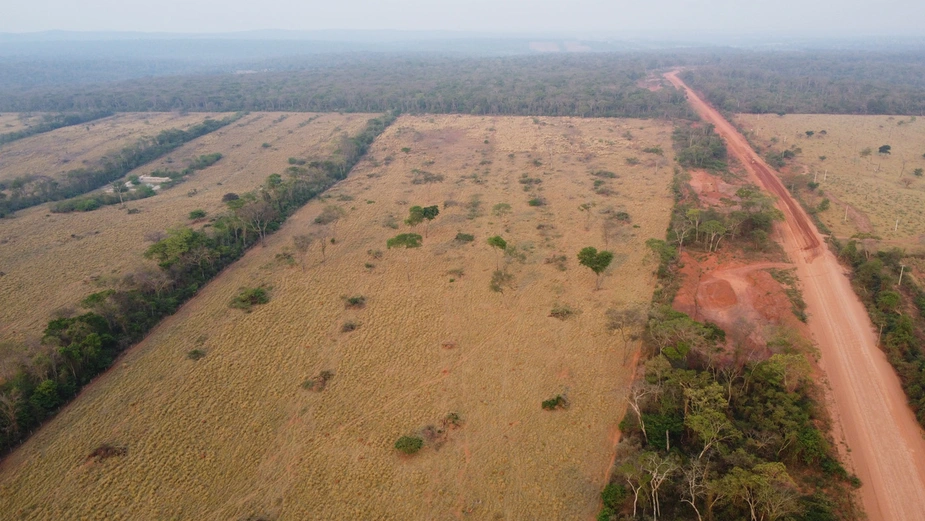HU Geographer studies investments in environmental and biodiversity conservation in South America
Cross-national analysis shows how funds can be used more efficiently to protect tropical forests
Scientific studies on the protection of tropical rainforests and dry forests show three trends over the last few decades: since the 1990s, the forest cover has shrunk by an estimated 65,000 to 95,000 km2. At the same time, more and more forest areas have been put under protection and more and more funds have been made available worldwide for conservation. But how and where is this money being spent? Is it being spent on places where forests are disappearing the fastest or where protected areas already exist?
Data analysis reveals links between international investments in nature conservation in South America and the state of tropical forests
Geographer, Dr Siyu Qin, investigated these questions using the example of forest and savannah areas in Argentina, Bolivia, Brazil and Paraguay – countries where these ecosystems are under pressure and are shrinking heavily. Qin, who conducted research as a doctoral student at the Geography Department of Humboldt-Universität zu Berlin (HU) from 2018 to 2023 and has since been working for the international conservation organisation The Nature Conservancy, summarised data on nature conservation projects in these regions and the funds made available for them by the most important donor countries such as the USA, Germany and Norway as well as multilateral organisations like the World Bank. This resulted in the first time series of cross-border maps of investments in nature conservation in South America. Qin also used satellite-based data on deforestation and land-use changes as well as data on the spatial extent of protected areas over time.
Little money reaches areas where forests are disappearing fastest
Analysing the data shows that the funds do not necessarily reach the areas where forests and savannahs are disappearing the fastest, and with them their biodiversity. “The donors’ money often goes to areas with more forests and not to the specific places that are going through rapid deforestation. So, eventually, we are seeing more and more money concentrated in regions that are well known – such as the Amazon rainforest. Other areas such as the Cerrado, Brazil's tropical savannah, the Gran Chaco in Argentina or the Chiquitano dry forests in Bolivia are being neglected relatively,” says Siyu Qin.
Protected areas mobilise the highest investments
Funds are also generally channelled into existing protected areas that have been designated by the respective countries in South America. In the case of Brazil, this includes Indigenous people’s territories. This is because Brazil recognizes and reports these Indigenous territories also as areas protected and counting towards the nation’s conservation targets. “We found that more money went to these conservation areas, and the trend is consistent across and within different regions – be it Amazon, Cerrado, or Chaco.” summarises Qin.
Map of conservation investments can help to better manage financial flows – for the benefit of biodiversity and climate protection
“The tropical forests and savannahs of South America are of outstanding importance for nature conservation, as they are home to a large proportion of global biodiversity and represent gigantic carbon reservoirs,” explains Prof Tobias Kümmerle from the Geography Department of HU, who supervised the dissertation project. “It is important to protect these areas effectively and the global community and many international organisations do provide considerable funding for this purpose. Until now, however, it was unclear in which regions these funds were ultimately spent.”
To counteract the dramatic loss of species diversity and protect biodiversity on Earth, the global community agreed at the 2022 Biodiversity Conference to place 30 percent of the land and sea surface under protection by 2030. So far, only around 17 percent of the land and seven percent of the oceans are under protection. “As organizations and governments promise to fund conservation and protect more of our planet, our study can support them to ensure that the money is better distributed to help the forests in need and the lives they support,” says Siyu Qin.
Publication:
Links between deforestation, conservation areas and conservation funding in major deforestation regions of South America
Siyu Qin, Ana Buchadas, Patrick Meyfroidt, Yifan He, Arash Ghoddousi, Florian Pötzschner, Matthias Baumann, Tobias Kuemmerle
People and Nature, Volume 6, Issue 5, Oct 2024. DOI:10.1002/pan3.10718
Contact
Dr. Siyu Qin
Geography Department of Humboldt-Universität zu Berlin
siyu.qin(at)geo.hu-berlin.de
Prof. Dr. Tobias Kümmerle
Geography Department of Humboldt-Universität zu Berlin
tobias.kuemmerle(at)hu-berlin.de
Credit: HU Berlin, 22 October 2024
